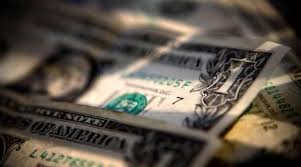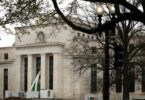WASHINGTON (Reuters): The US dollar was on track to record a weekly fall for the first time in 2024 on Friday, as investors took a breather after subsiding expectations for future Federal Reserve rate cuts drove the greenback up.
Meanwhile, the yen sagged and headed for a fourth weekly drop as investors chased better yields just about everywhere else, wagering Japan’s rates would stay near zero for some time.
The greenback has bounced this year as strong economic data and warnings from Fed officials the inflation fight was not over supported expectations that rate cuts will be pushed out to June or later in the year.
Some analysts recently flagged that the dollar retracement in 2024 has been more significant than in US yields, and further strength over the near term was limited.
“It’s not the time yet to sell the dollar, but we think it will start to weaken in the second quarter, assuming that the Fed will cut in June and continue cutting rates once a quarter,” said Athanasios Vamvakidis, global head of G10 forex strategy, BofA Global Research.
BofA expects the euro to strengthen to 1.15 versus the greenback by year-end.
“If the US economy remains so strong, we have to change our view, as the Fed might not be able to cut in June or not even this year,” he added.
The dollar index , which measures the US currency against six others, rose 0.06% to 103.96 and was set to record its first weekly fall – 0.28% – since the end of December.
Personal Consumption Expenditures (PCE), the Fed’s favourite inflation gauge, due next week, may be the next major release to provide further clues for the US monetary policy.
The single currency was flat at 1.0823 versus the greenbasck.
“The euro zone is slowly healing but is doing so without Germany, and the euro can’t ignore Germany,” said Kit Juckes, macro strategist at Societe Generale, referring to recent data showing Germany’s economic downturn deepened in February.
“Norwegian crown and Swedish crown, or Polish zloty, are a better buy than the euro,” he added.
The Swedish crown hit 11.1321 on Thursday, its highest level since Jan. 2. It was last down 0.24% at 11.173%. The Norwegian crown was last down 0.2% to 11.385.
YEN WORST PERFORMER
The yen is the worst-performing G10 currency this year, with a 6.3% slide on the dollar. The greenback is the best performer.
For the week, the yen is down 0.8% on the euro, touching its weakest for three months on Thursday at 163.45 per euro. The dollar gained 0.15% to trade at 150.75 yen this week.
Investors can earn interest, or “carry”, by borrowing yen around 0% and buying income-bearing assets in other currencies.
“There’s a focus on carry while we’re in a range-bound environment,” said Bank of Singapore strategist Moh Siong Sim, noting that hopes for a yen rally had taken a hit from last week’s data showing an unexpected slide into recession in Japan.
With Deutsche Bank’s foreign exchange volatility index collapsing to two-year lows and markets backpedalling on bets for deep rate cuts in the US, Europe and Britain – leaving yields elevated – the trade is profitable.
“We believe the Bank of Japan (BoJ) will raise rates to zero and stop yield targeting in April. However, this should be already in the price,” argued BofA’s Vamvakidis.
“For the dollar/yen to weaken, we need the Fed to start cutting rates,” he added.
Elsewhere, the flow into higher-yielding currencies helped lift the Australian and New Zealand dollars.
China’s yuan has made a steady return since the Lunar New Year holiday break, barely moving this week at 7.1959 per dollar despite steep cuts to Chinese mortgage rates.







